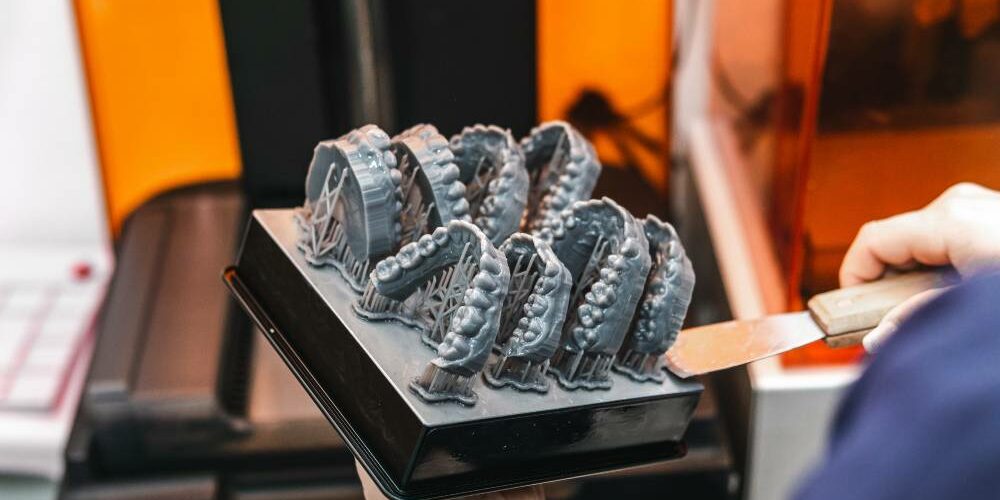
How can 3D printing help straighten my teeth?
Have you ever thought to yourself, “I want to straighten my teeth,” but hesitated because you were concerned about the potential time or money involved? If so, consider how 3D printing technology can help you straighten your teeth while reducing treatment time and cost and improving the overall experience.
Many orthodontists, including Bruno Orthodontics, have begun incorporating 3D printers into their operations. A survey from the American Association of Orthodontists found that the number of people seeking orthodontic treatment has steadily increased over the years, specifically among adults. One of the reasons for this increase is advanced technology, such as 3D printing, which offers significant advantages for patients who want to straighten their teeth.
3D Printing Creates a Better Fit
3D printers are more customizable, allow for more complexity, and are more accurate, resulting in a better fit for the patient. Not only does 3D printing create a better fit, but it does so more quickly without requiring extensive trimming, polishing, and adjusting. 3D printing solutions can create more accurate oral devices with a broader range of materials. Printed molds can be used to make retainers the same day you get your braces off. Given the importance of wearing a retainer to protect the final results of your teeth-straightening journey, this is essential. Retainers help stabilize teeth, solidify their position, and keep them straight.
More Comfortable Orthodontic Treatment
The old process for creating molds and models for teeth included taking impressions manually using putty in a u-shaped tray. The patient would need to hold the tray firmly in their mouth, against their teeth and gums, for two to three minutes to form the impression. The process was uncomfortable and messy. However, 3D printing transforms this process and allows the orthodontist to take impressions using a digital scanner. The orthodontist then scans the impression into the computer, uses software to make modifications, and creates a digital model that can be 3D printed. Your orthodontist can make 3D printed clear aligners with state-of-the-art plastic material, right in their office.
Quicker Turnaround
With affordable prices and compact sizes, 3D printers allow for orthodontic practices to offer in-office printing capabilities. This can greatly reduce turnaround time and improve overall workflow. No longer do you have to wait on physical impressions to be sent to the lab for a retainer, which can take weeks. The 3D printing process can greatly simplify production processes, allowing orthodontists and lab technicians to save time, labor, and material.
Less Expensive
Creating orthodontic devices in-office saves the orthodontist money on lab fees and shipping costs. While 3D printers used to be extremely expensive, cost-effective desktop models are now becoming more widely available. These cost savings can be passed down to the patient.
Given that as many as 45% of people need orthodontic treatment to correct functional problems, and an even greater percentage could benefit from hidden issues, the advantages of 3D printing in orthodontics can greatly benefit many patients seeking treatment. Schedule a virtual consultation to see if 3D printing can help you with your orthodontic needs and meet your goal to “straighten my teeth.”
Bruno Orthodontics offers Invisalign, braces, and other orthodontic treatment for adults, teens, and children in an award-winning office in Chevy Chase. Dr. Jill Bruno is a Diamond+ Provider for Invisalign, putting her in the top 1% of Invisalign doctors. Convenient online scheduling and virtual consults are available for new and current patients.



